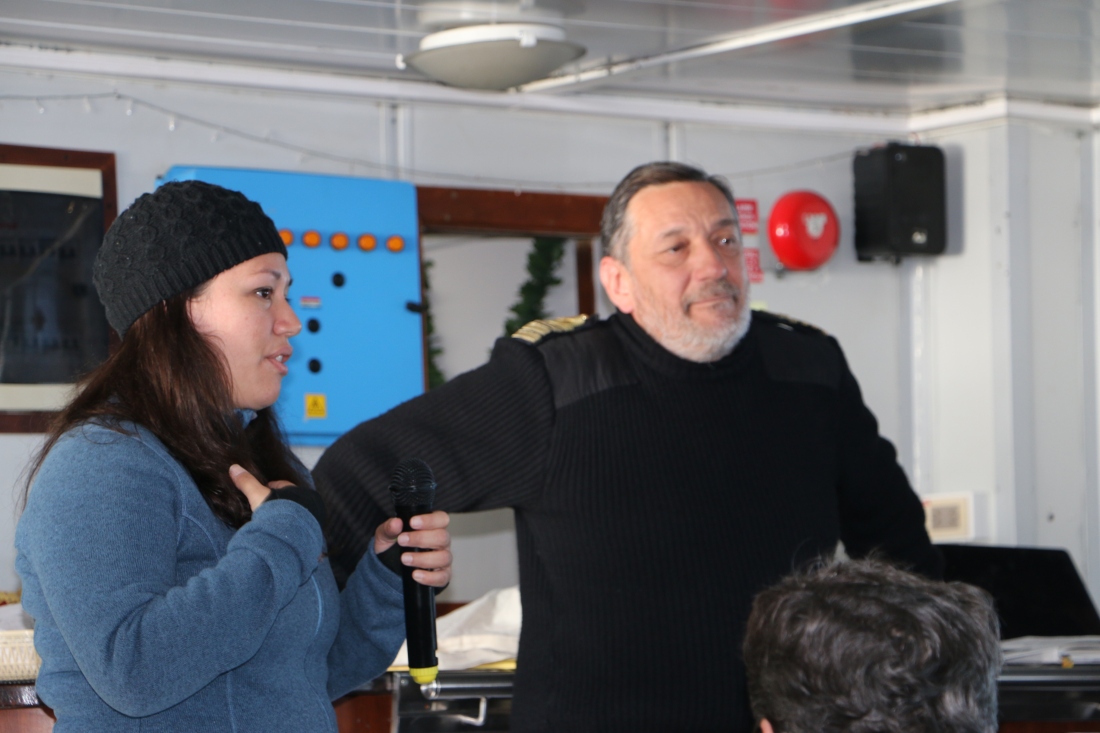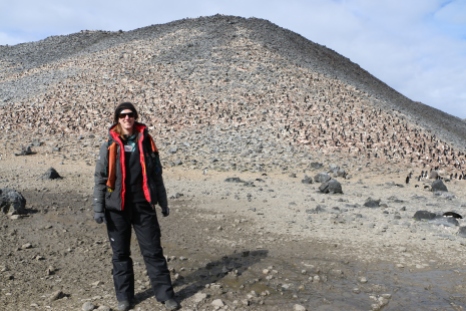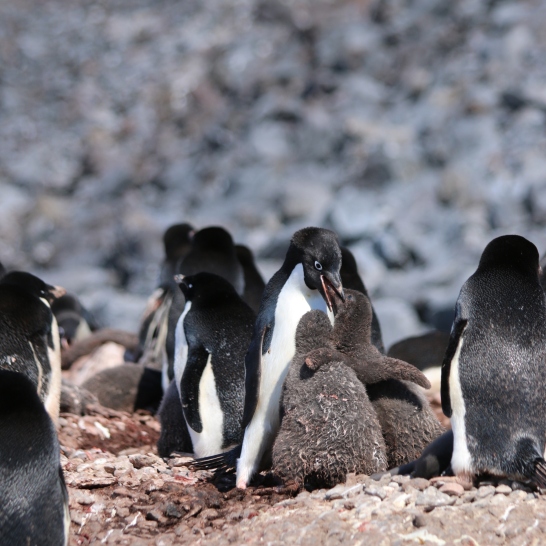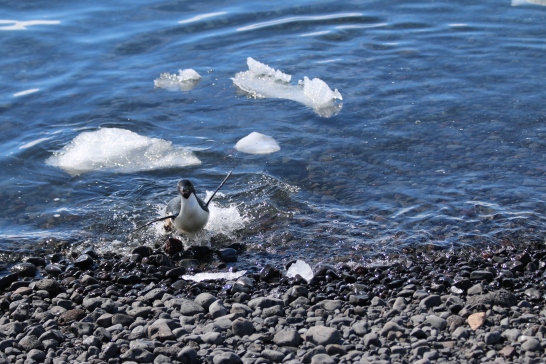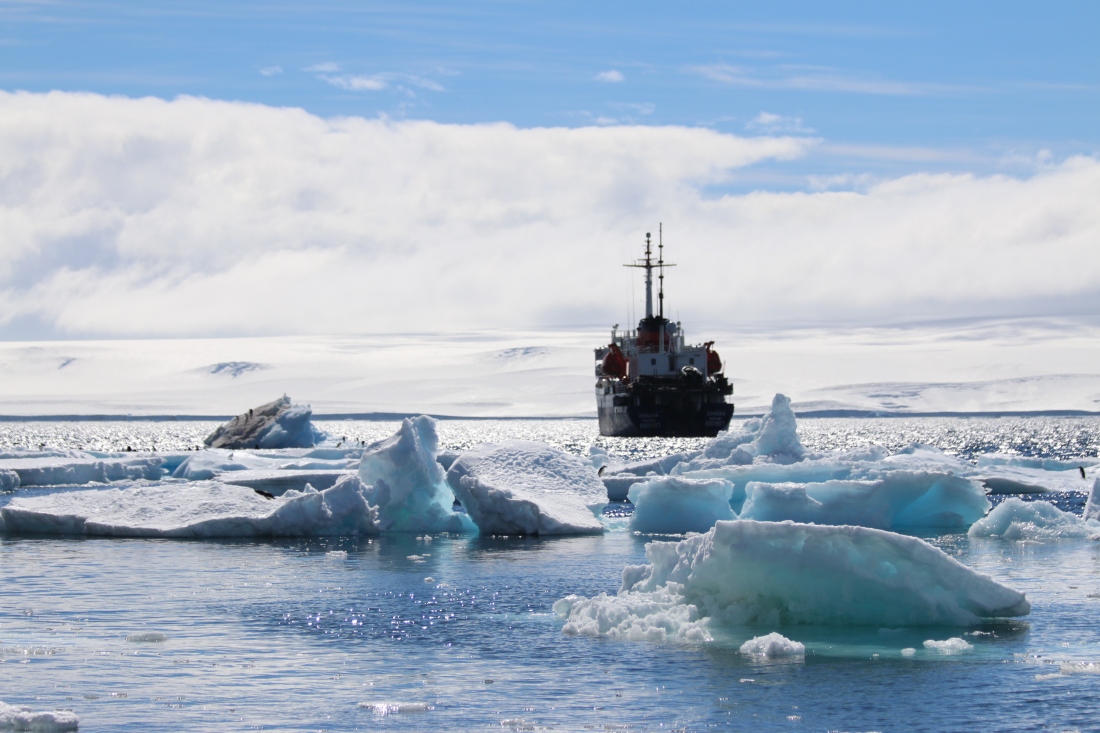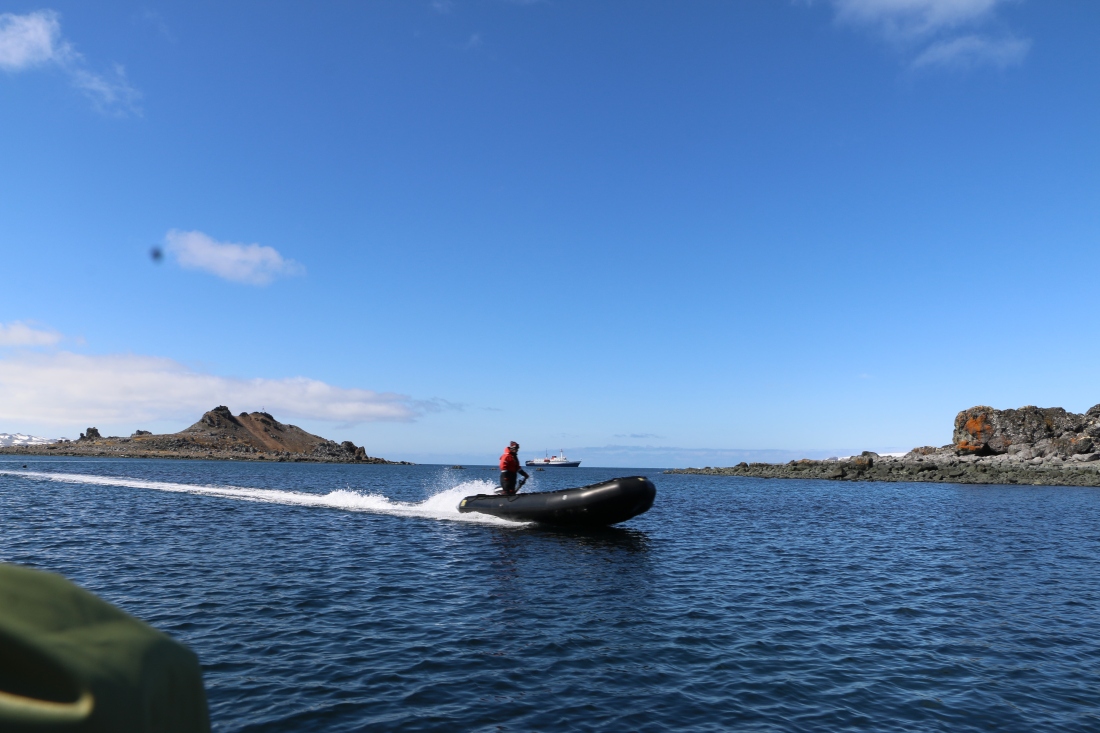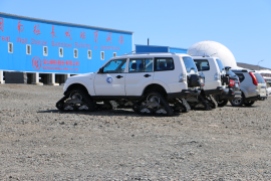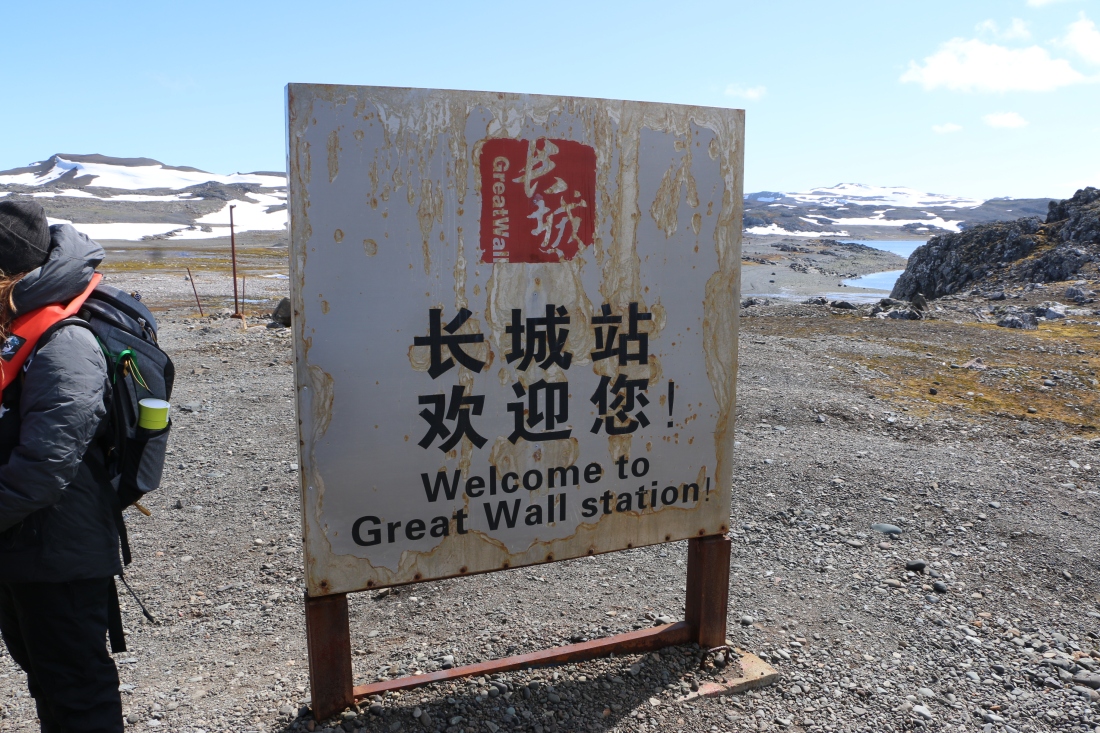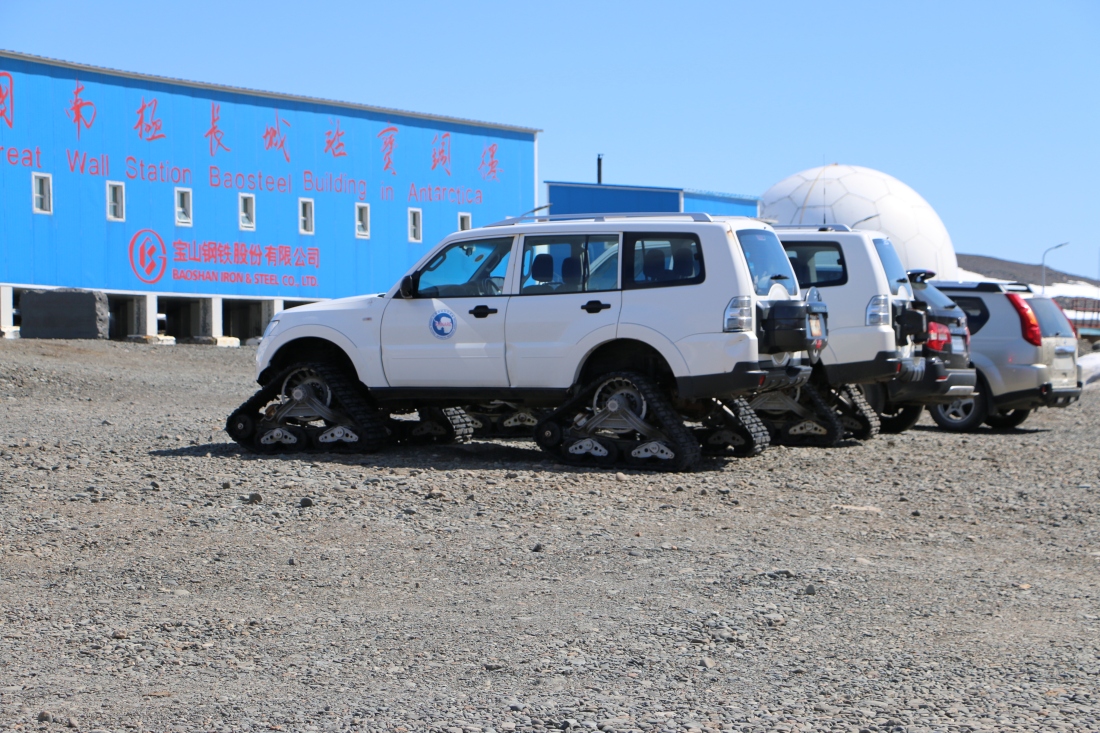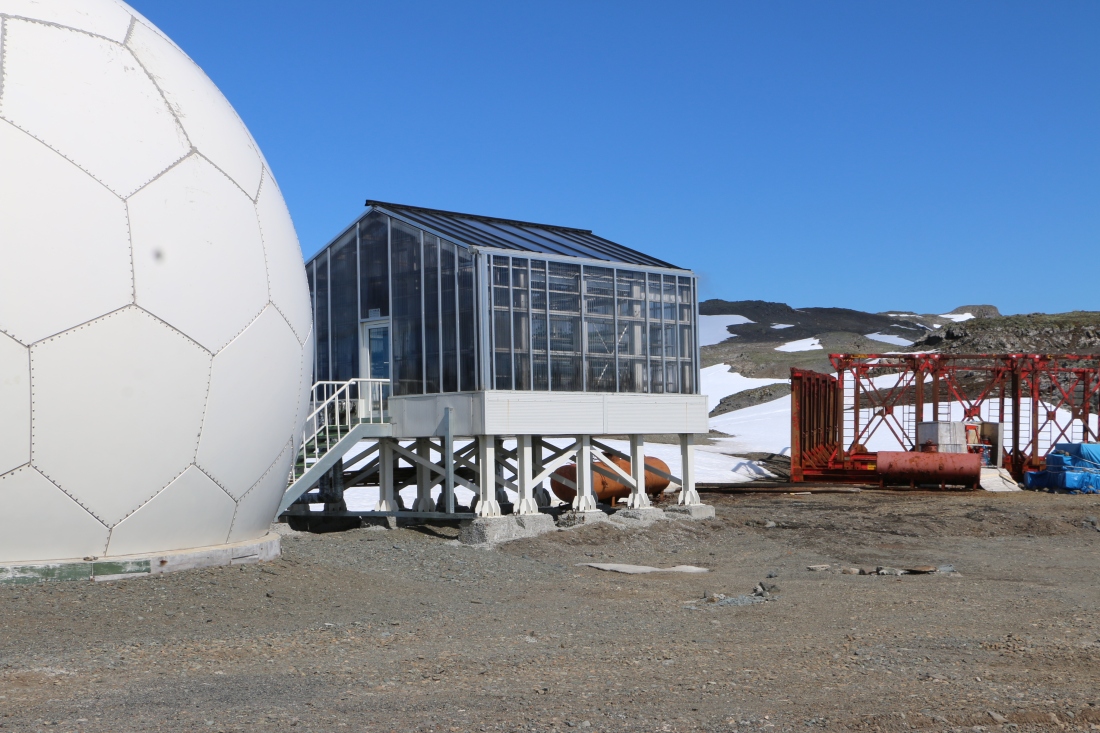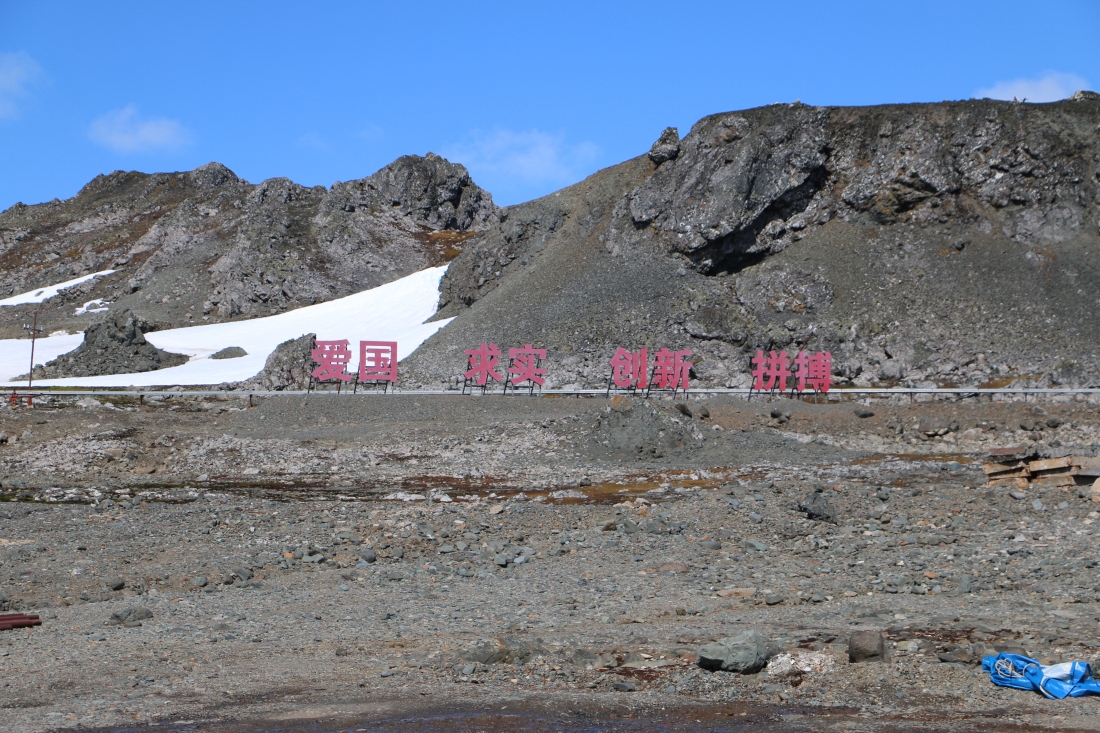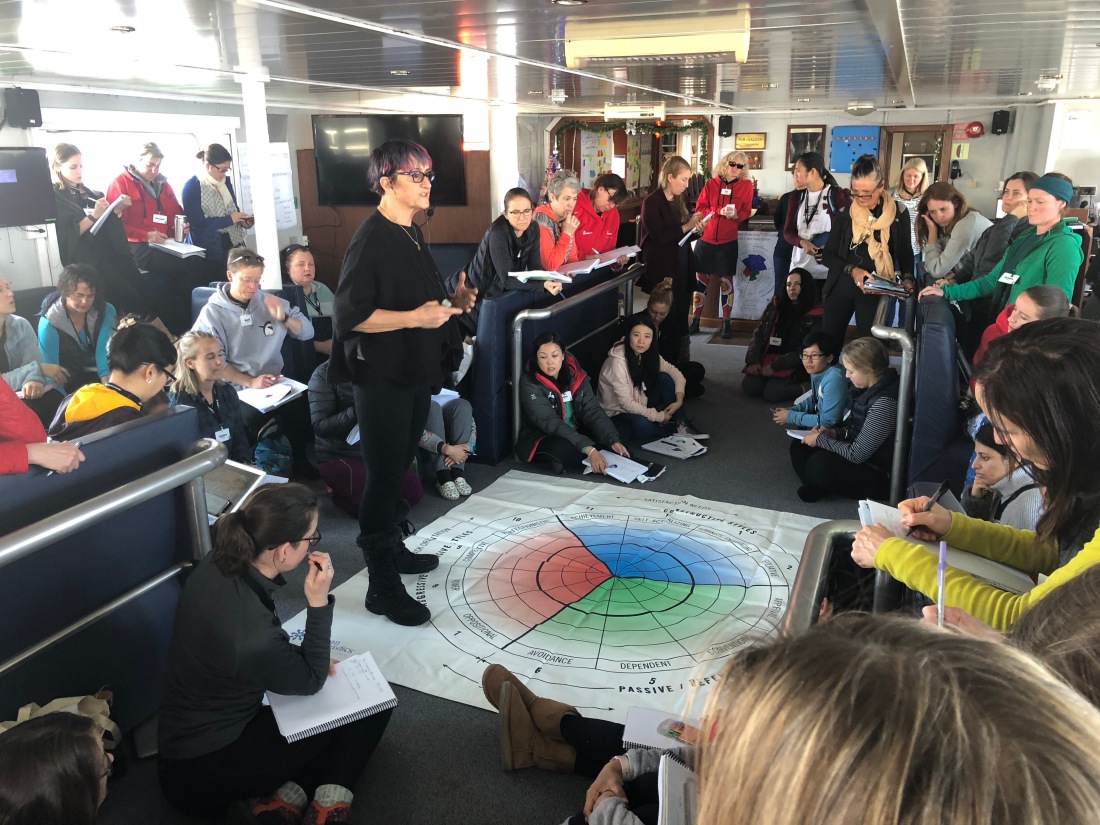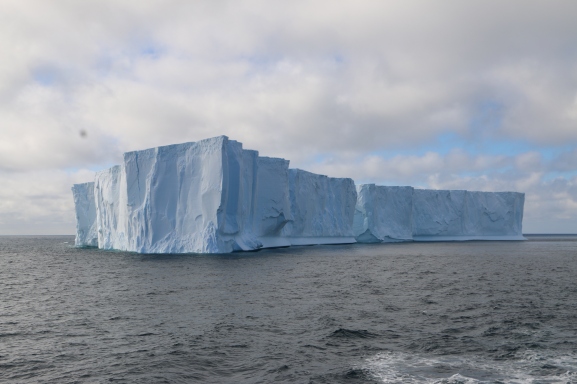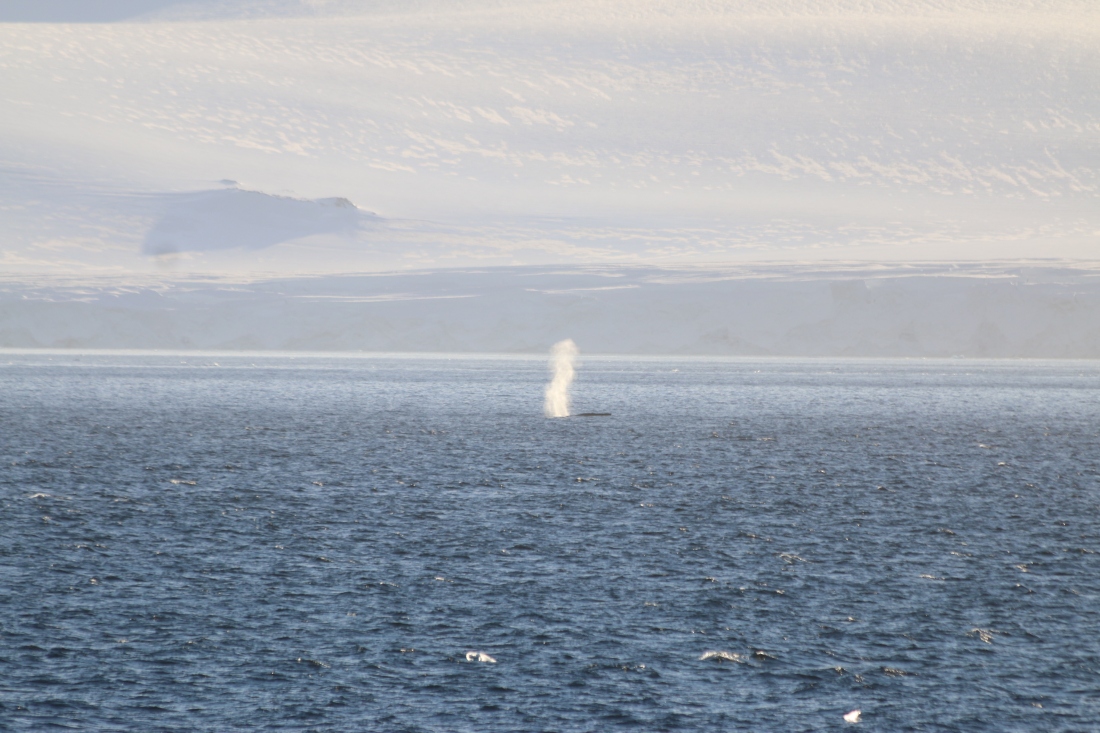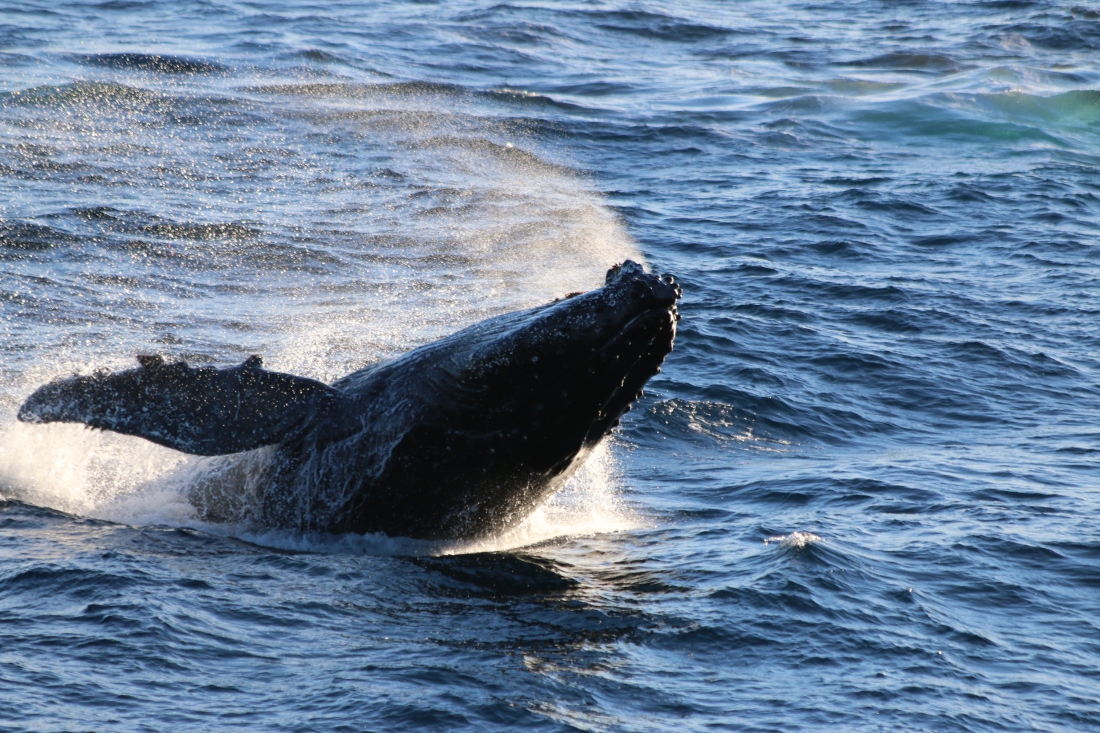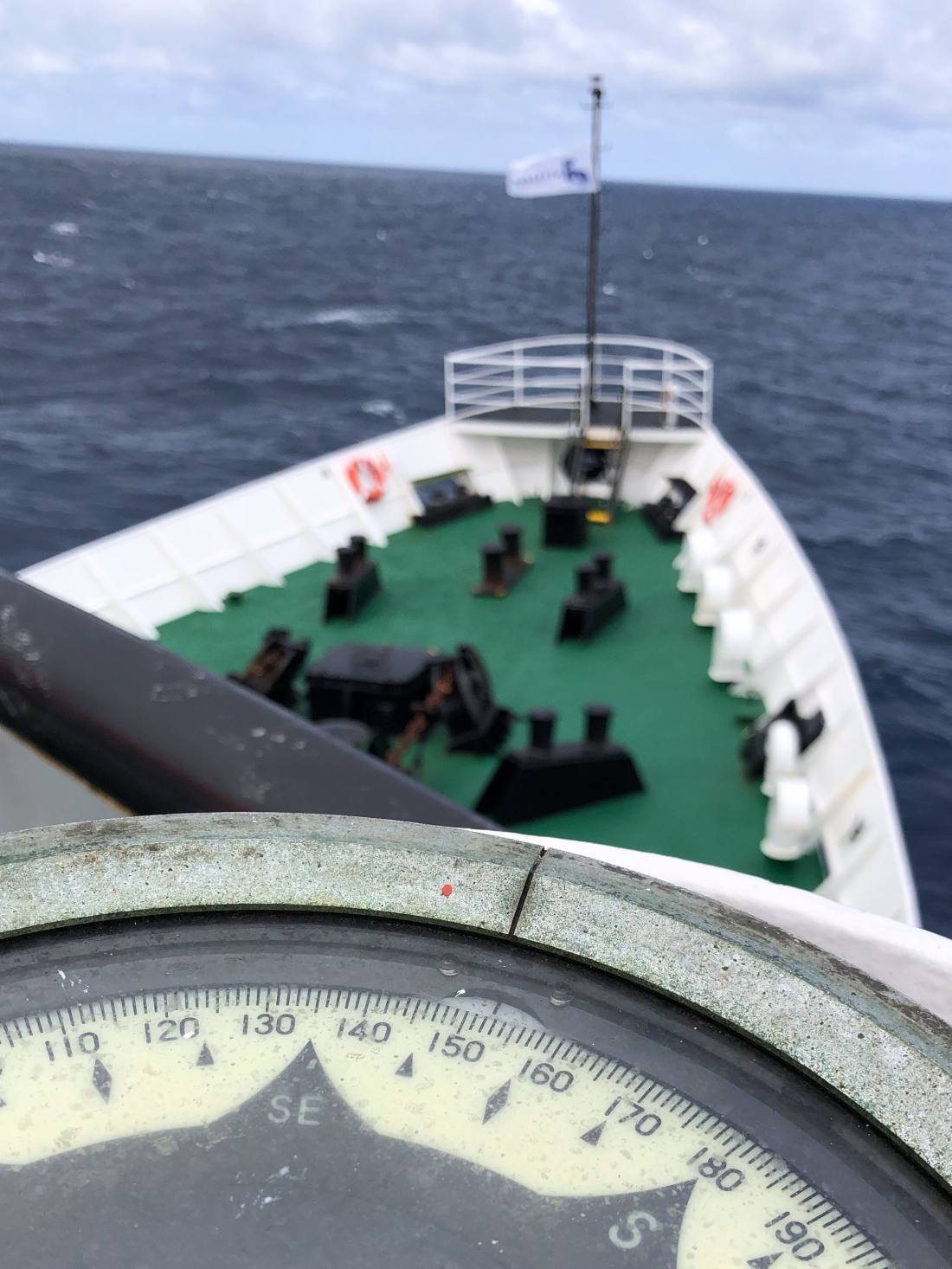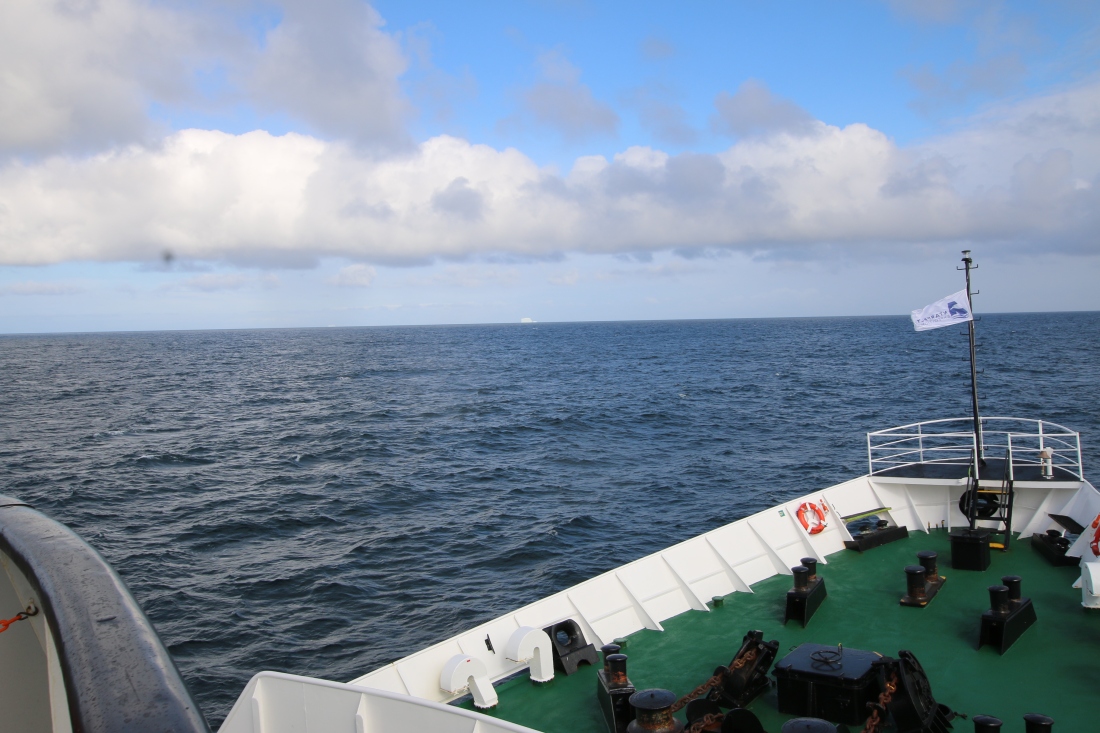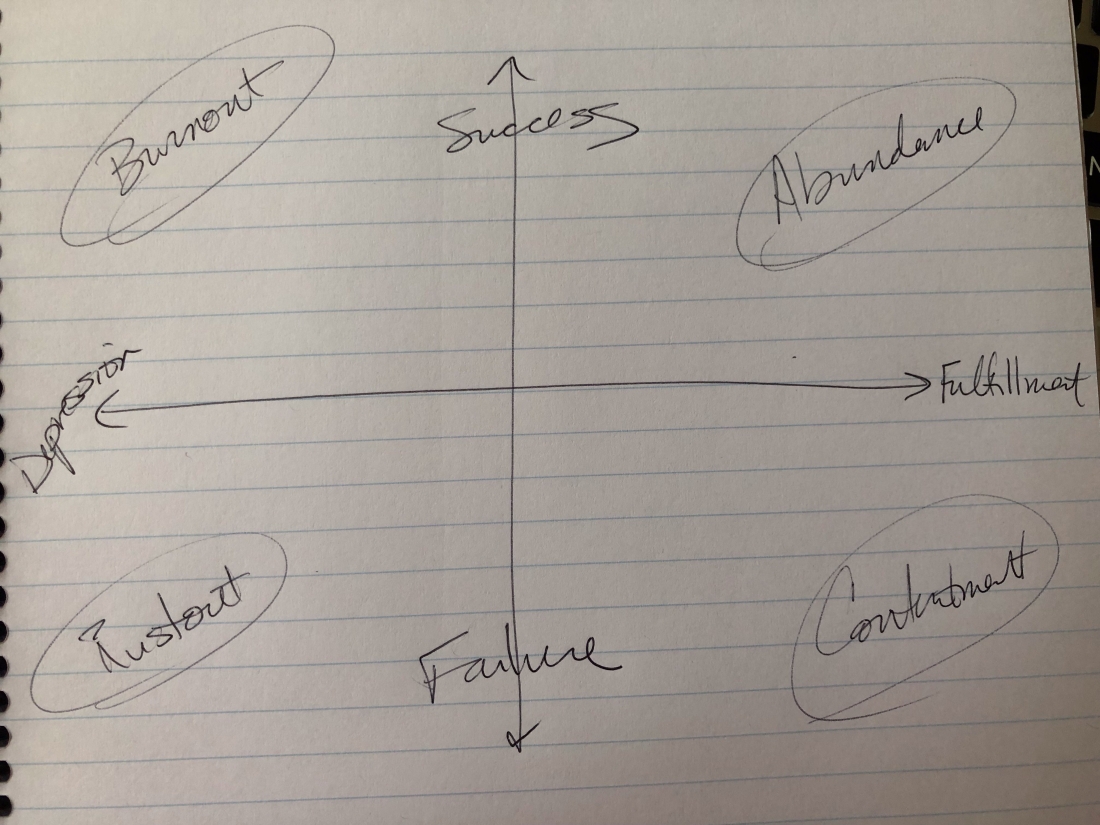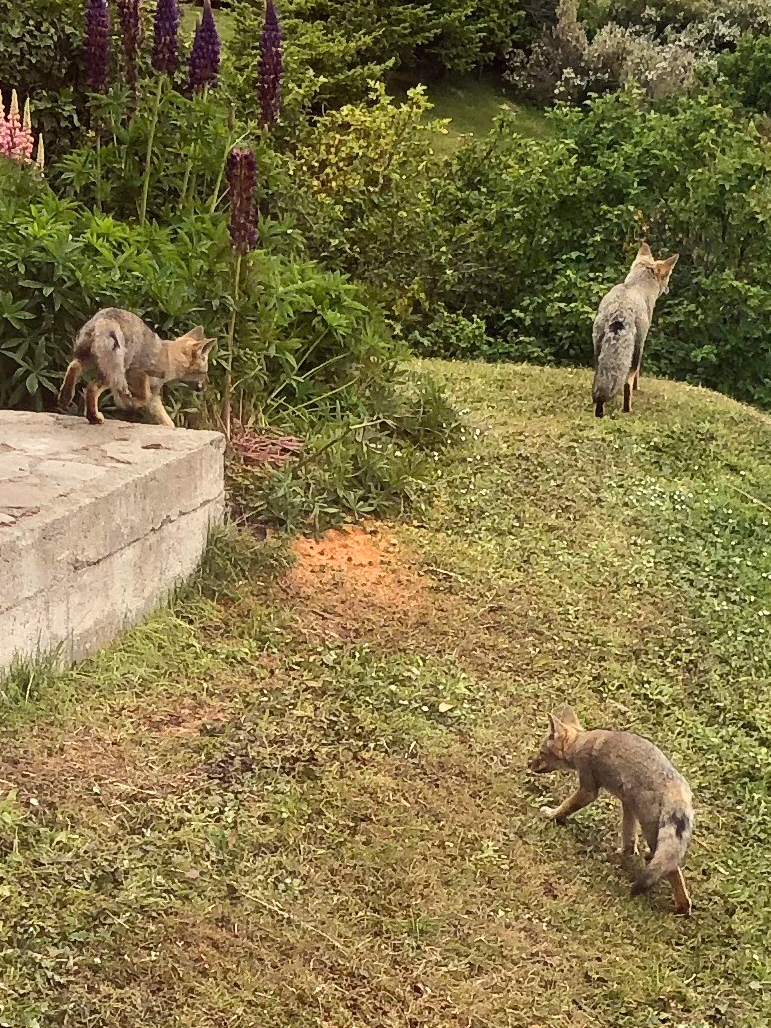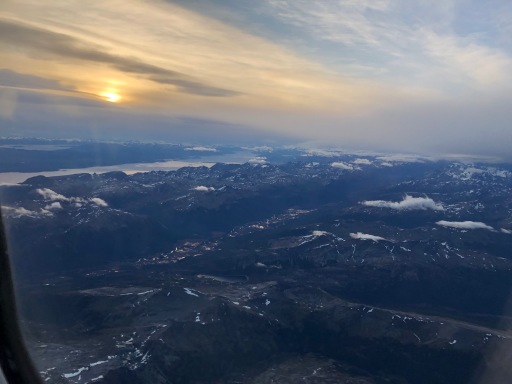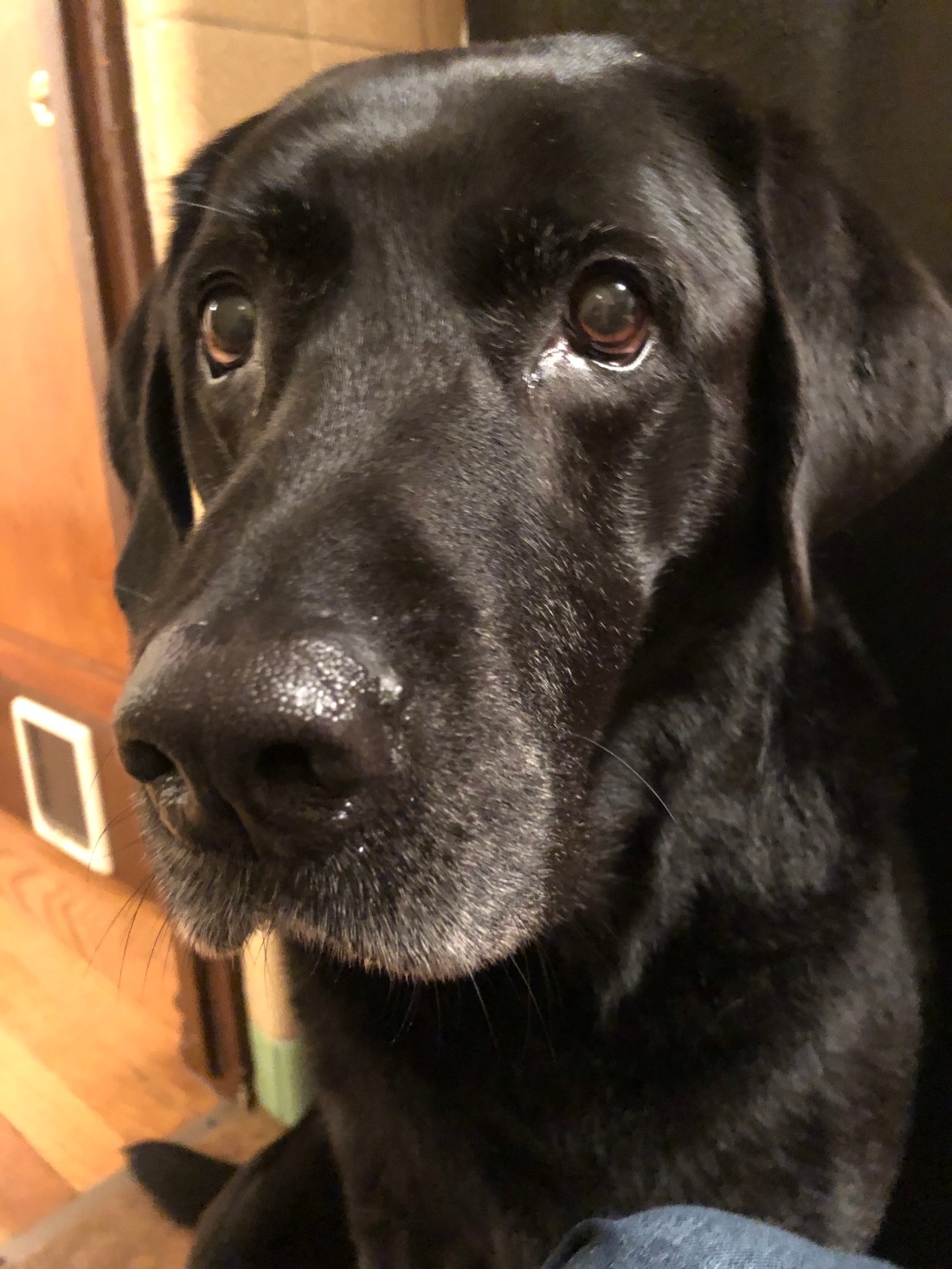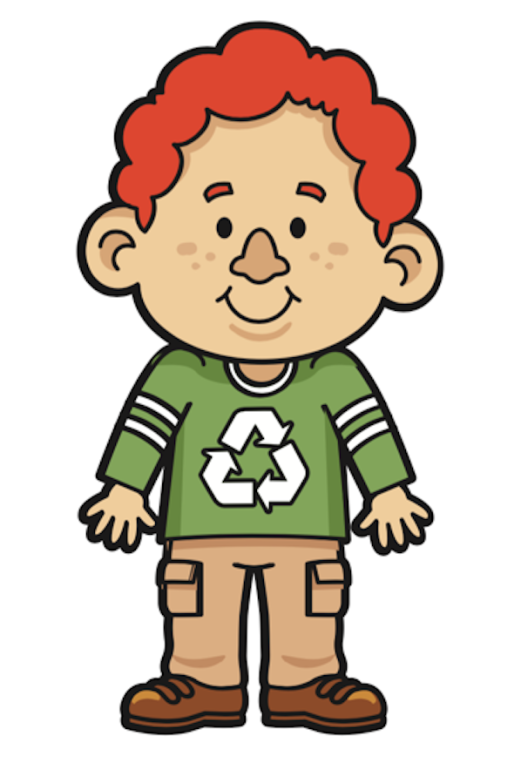The date today was January 5, 2019.
After visiting Paulet Island, we made a complete 180 and headed back across the Bransfield Straight to King George Island to visit Carlini Station which belongs to Argentina. Carlini is located on Potter’s Cove which is adjacent to Maxwell Bay, the site of the Great Wall station.

Admittedly, I was a little irritated when I realized we were going back to almost exactly the same place we had come from. It seemed counterproductive. However, I later learned a couple of things. First, the ship has to make arrangements months in advance to schedule landings making the itinerary somewhat rigid (in a region of the world where being flexible is critical). I also learned the ship didn’t drop an anchor at night due to the risk of fast moving ice bergs. Once I realized the rigidity of the schedule and that the ship was traveling anyway, this doubling back wasn’t really a big deal.

Carlini is a research station. This is definitely not a complete list, but we met SCUBA divers, the physician who oversees the hyperbaric oxygen chamber, an international team of microbiologists, and a psychologist. All were very gracious in explaining their various jobs and research activities to us.
One thing I found very interesting during this visit was the Argentinian logo which shows a large triangular wedge of Antartica and the surrounding seas.
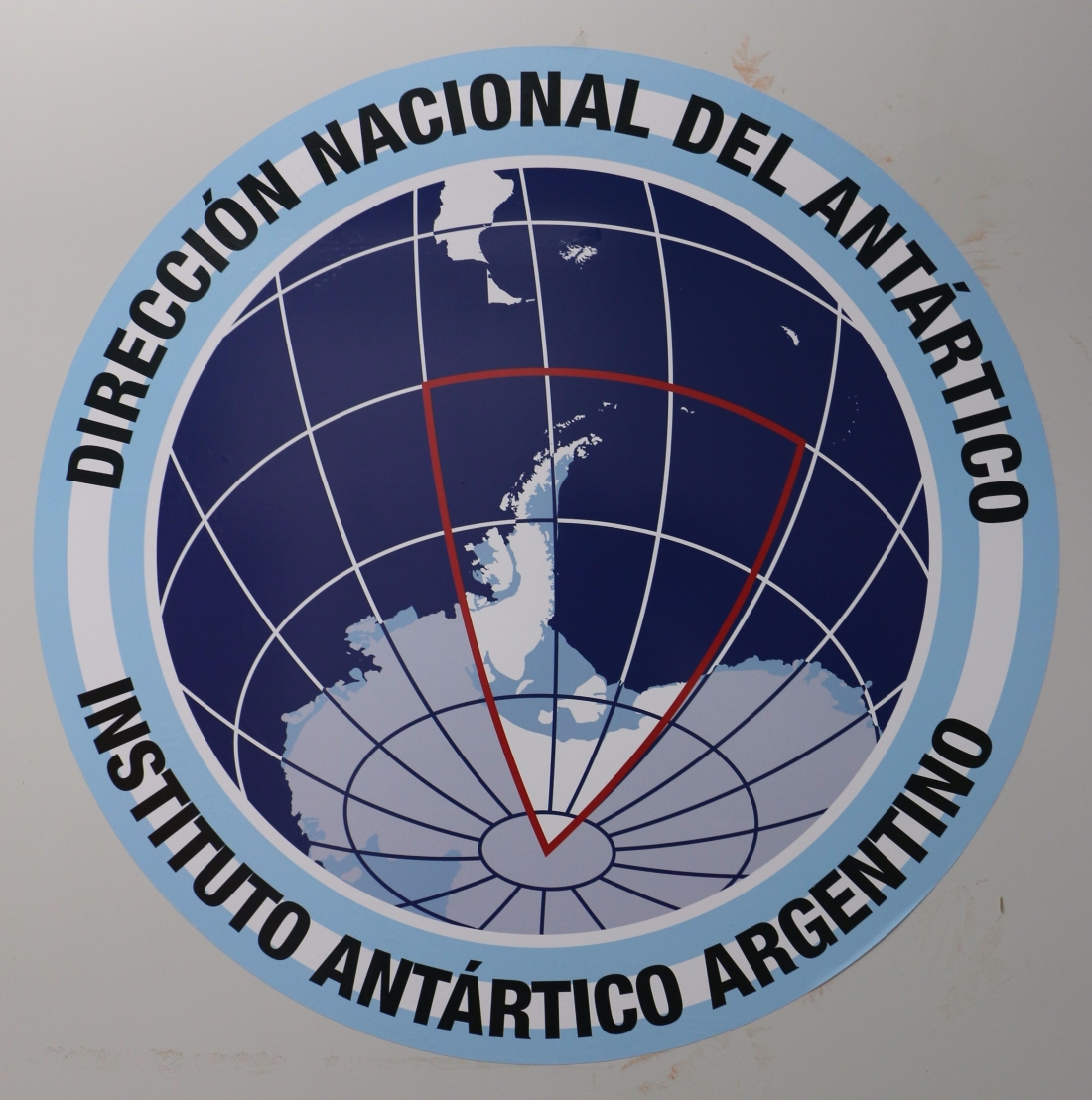
This represents Argentina’s claim in Antartica. There are actually several countries with claims in Antarctica, but none of them is enforced as a result of the Antarctic treaty which does not recognize or dispute such claims, and prevents new claims from being made while the treaty is in effect. The treaty was enacted in 1961 with 12 countries as initial signatories. Since then, a total of 53 countries have joined. The current treaty expires in 2048. The treaty essentially sets Antarctica aside for science and prevents military or commercial activity. The map below shows the research stations and international claims on the continent (copied from Wikipedia).
Following the station visit, we had another session on Peer Coaching and a session on Visibility. The Visibility session started with the critical question of “Why Be Visible?” Though for all of us, the answer begins with “I want to be known for…”, the rest of the answer is unique and ties back to the Personal Strategy work we started in Ushuaia. Critical to visibility is understanding one’s goals, audience, message and platforms. It is also important to recognize that visibility is not just visibility to the outside world, but it starts with visibility to self. It’s hard to have a meaningful external conversation without being genuine and honest internally. I know, sounds simple. Try it on for size and let me know what you think.

The Visibility Session was followed by another Symposium at Sea.
And the day ended with the first of 4 talks from Christiana Figueres.

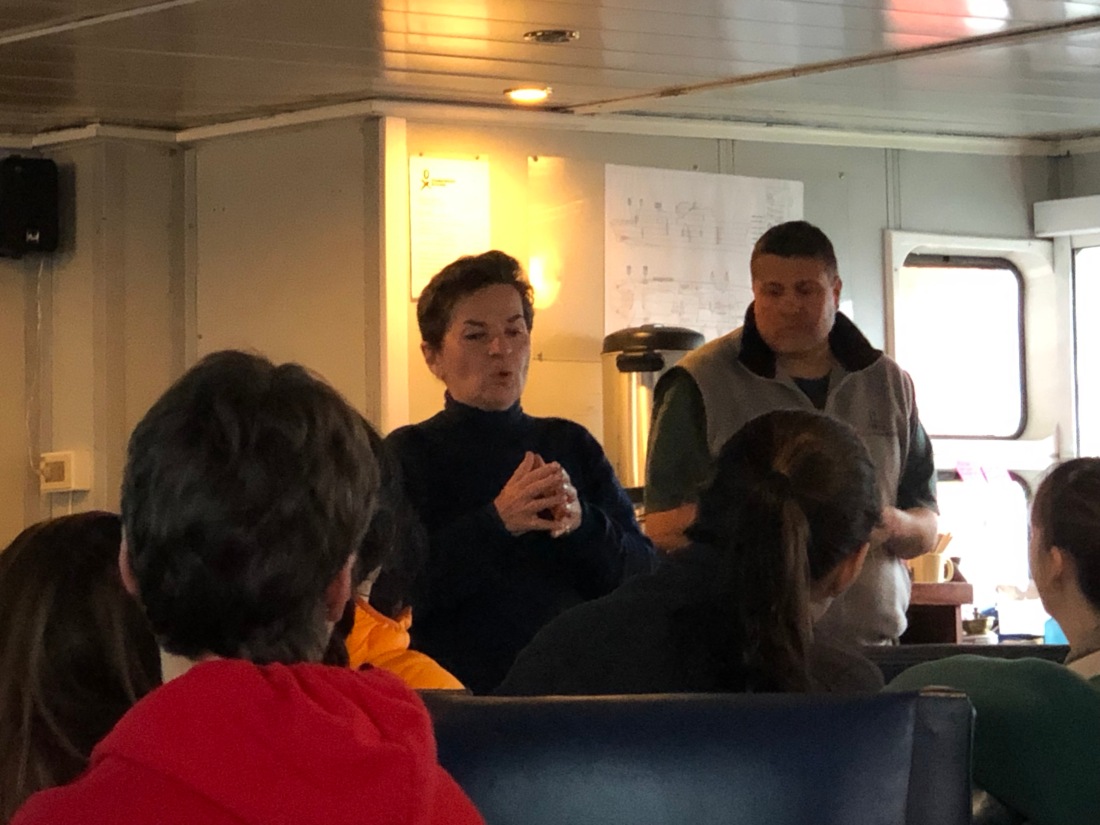 Christiana was the Executive Secretary of the United Nations Framework Convention on Climate Change from 2010 – 2016. Essentially, she brokered the Paris Climate Agreement which was a herculean task. Just being in the same physical space with her was truly inspirational. Her motivation for working toward climate change is to leave the planet a better place for her children. She credits her success to “Stubborn Optimism”. She spoke about the challenges she faced and the strategies she used. Her approach was practical, inclusive, diverse, simple, and very smart. It was reassuring to hear the leadership strategies used were very much in line with the lessons we were receiving in the program. It was also somewhat reassuring to hear that while she was busy saving the planet, she also had to deal the with some of the same routine “office drama” that we all encounter. It helps to know that even rock stars have to put out fires too.
Christiana was the Executive Secretary of the United Nations Framework Convention on Climate Change from 2010 – 2016. Essentially, she brokered the Paris Climate Agreement which was a herculean task. Just being in the same physical space with her was truly inspirational. Her motivation for working toward climate change is to leave the planet a better place for her children. She credits her success to “Stubborn Optimism”. She spoke about the challenges she faced and the strategies she used. Her approach was practical, inclusive, diverse, simple, and very smart. It was reassuring to hear the leadership strategies used were very much in line with the lessons we were receiving in the program. It was also somewhat reassuring to hear that while she was busy saving the planet, she also had to deal the with some of the same routine “office drama” that we all encounter. It helps to know that even rock stars have to put out fires too.










